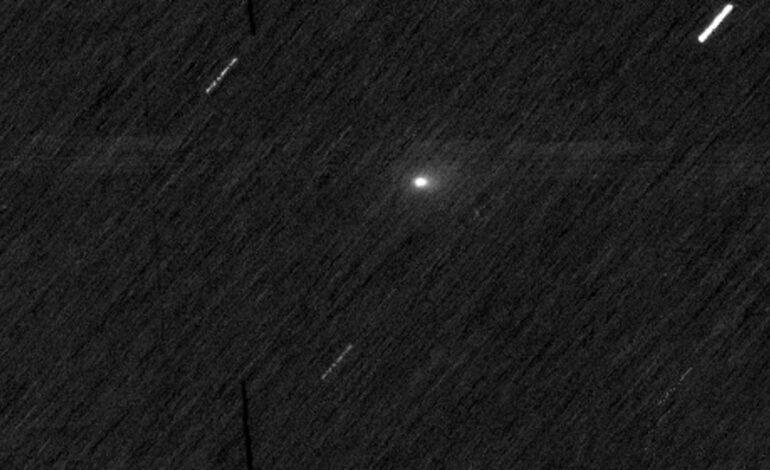European Mars Probe Captures Stunning Images of Interstellar Comet 3I/ATLAS

A European Mars orbiter has successfully photographed the interstellar comet 3I/ATLAS as it made a close approach to the Red Planet. On October 3, 2025, 3I/ATLAS passed within 19 million miles (30 million kilometers) of Mars, providing a unique opportunity for scientific observation.
The European Space Agency’s (ESA) ExoMars Trace Gas Orbiter (TGO) was positioned to capture images of the comet using its Colour and Stereo Surface Imaging System (CaSSIS). This observation posed a significant challenge for the instrument, as noted by CaSSIS Principal Investigator Nick Thomas. He stated, “This was a very challenging observation for the instrument. The comet is around 10,000 to 100,000 times fainter than our usual target.”
3I/ATLAS, discovered in July by the Asteroid Terrestrial-impact Last Alert System (ATLAS) telescope in Río Hurtado, Chile, is noteworthy as the third confirmed interstellar object to enter our solar system, following 1I/’Oumuamua in 2017 and 2I/Borisov in 2019. The comet is believed to carry invaluable clues about the solar system’s origins, with its formation estimated to precede that of our own solar system by approximately three billion years.
ESA’s Ongoing Campaign to Study 3I/ATLAS
The observations made by TGO are part of a broader ESA initiative to study 3I/ATLAS as it traverses the solar system. The agency’s Mars Express orbiter, which has been operational since 2003, also attempted to photograph the comet on the same date. However, the images captured by Mars Express did not resolve 3I/ATLAS, primarily due to a shorter exposure time of only 0.5 seconds, compared to the five seconds utilized by the ExoMars TGO.
Colin Wilson, project scientist for both Mars Express and ExoMars at ESA, expressed enthusiasm about these unexpected observations. “Though our Mars orbiters continue to make impressive contributions to Mars science, it’s always extra exciting to see them responding to unexpected situations like this one,” he commented. The ongoing analysis of the data is anticipated to yield further insights into the comet and its characteristics.
ESA officials emphasized the significance of interstellar comets, stating, “Every planet, moon, asteroid, comet, and lifeform in our solar system share a common origin. But interstellar comets are true outsiders, carrying clues about the formation of worlds far beyond our own.”
Upcoming Observations from Other Spacecraft
In the coming months, additional spacecraft will focus their observations on 3I/ATLAS. Notably, ESA’s JUICE probe, which is en route to Jupiter, will begin its observations of the comet on November 2, 2025. This timing coincides with 3I/ATLAS’ closest approach to the sun, expected to occur at a distance of 130 million miles (210 million kilometers). At this point, the comet is anticipated to be more active, providing JUICE with an enhanced opportunity to collect valuable data, despite being positioned farther away than the Mars probes during their encounters.
As scientists continue to study 3I/ATLAS, the insights gained from this interstellar visitor could deepen our understanding of the cosmos and the formation of celestial bodies. The observations from both the TGO and Mars Express mark a significant moment in space exploration, illustrating the capabilities and adaptability of contemporary space missions.






